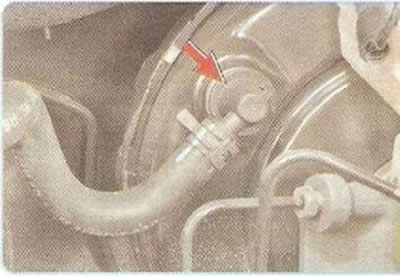If the vacuum booster fails, the force on the brake pedal increases significantly, which negatively affects driving.
If the effort on the pedals during braking has increased markedly compared to normal, check the brake booster with the vehicle stationary.
1. With the engine off, press the brake pedal five or six times (with an interval of about 5 s) and, keeping the brake pedal depressed, start the engine. The brake pedal should move forward. If it doesn't, check...

2.... the tightness of the vacuum hoses on the intake manifold...

3.... and on the housing of the vacuum brake booster.

4. To check the operation of the non-return valve, disconnect it together with the hose from the vacuum brake booster.
5. Check the operation of the valve installed in the cavity of the vacuum hose, for which firmly insert the nose of the rubber bulb into the hole of the check valve and squeeze it. The air from the pear should exit through the valve.
6. Release the pear. If it remains in a compressed state, then the valve is working. In the absence of a pear, you can purge the valve with your mouth.
7. If the check valve allows air to flow in both directions, replace the vacuum hose and valve assembly.
8. Install the parts in the reverse order of removal.
